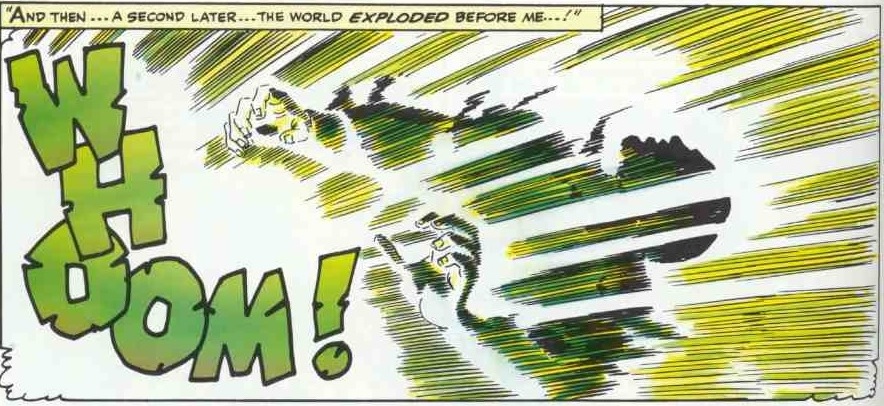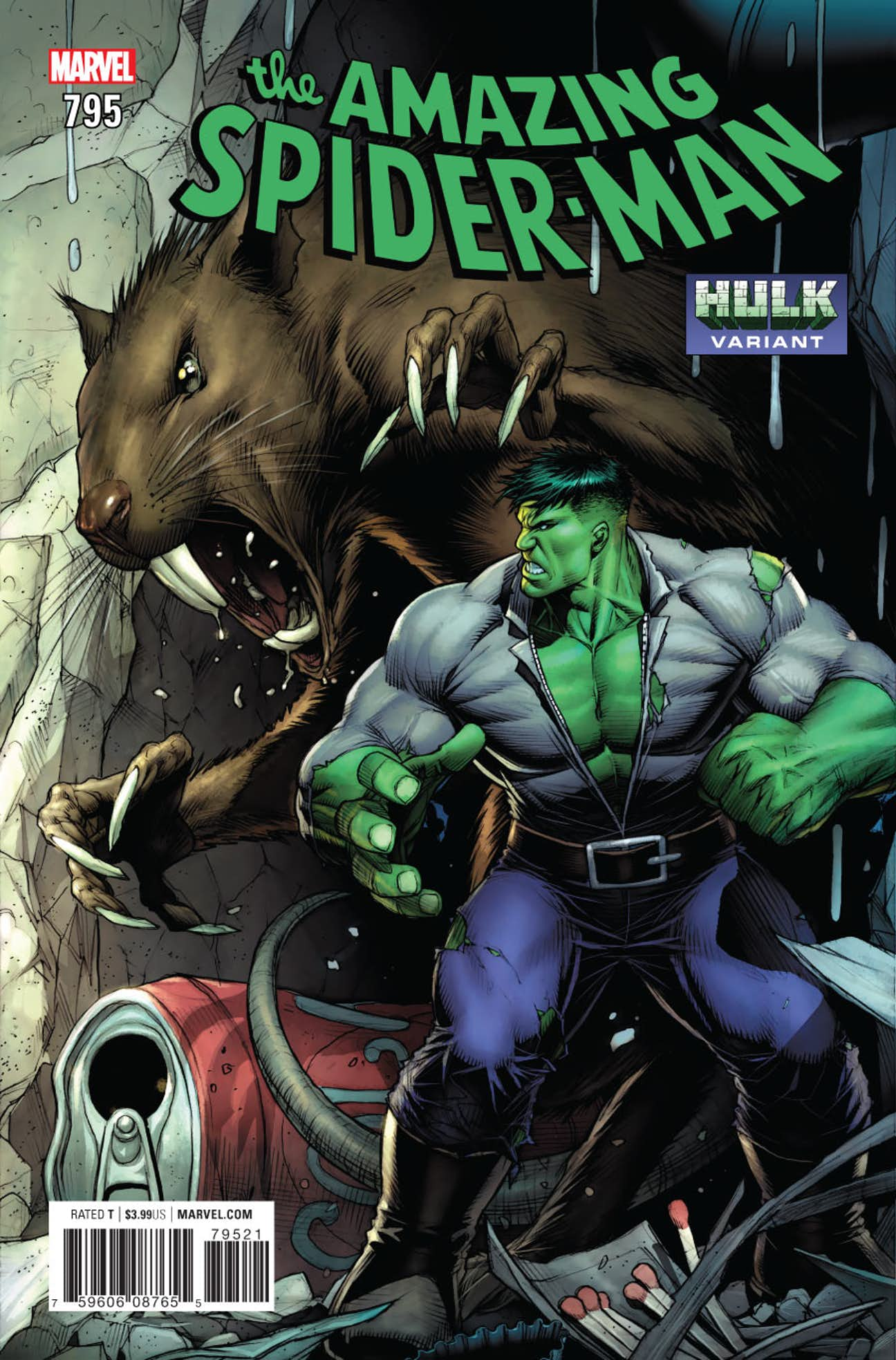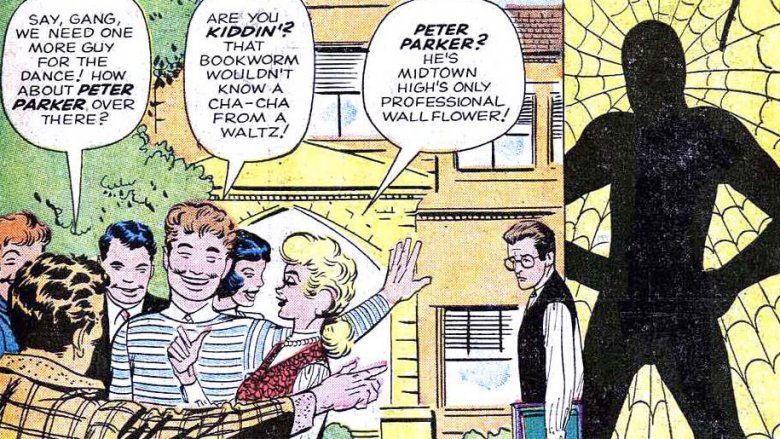Amazing Spider-Man #40 is one of the most important Marvel comics ever published. It’s not mainly because of the creative team, even though it was the second issue with John Romita Sr on art and the conclusion of his first story. It’s not really due to the content, which included the revelation of the Green Goblin’s origin, in addition to Norman Osborn developing amnesia at the end and forgetting he was a supervillain, a decision which led to the Goblins being a permanent menace in the series, a throughline that would continue with his son Harry, and lead to the death of Gwen Stacy.
The most significant thing about the issue is that it introduced the best Spider-Man writer since Stan Lee to the character, which makes it a rather appropriate topic for the first entry of this series on Spider-Man history.
Roger Stern explained it in a text piece for the first issue of the mini-series Revenge of the Green Goblin.
This all happened in the pages of THE AMAZING SPIDER-MAN (Volume 1) #40, which I found on a comics spinner rack at Hayden’s drug story during the lazy, hazy summer of 1966. I had come onto the second part of a two-part story…not that it mattered, of course. Stan Lee and John Romita told the story so well, I could follow everything without any trouble. By the time, I finished reading the issue, I learned the origin of the Green Goblin, was quickly brought up to date on his previous run-ins with Spider-Man, and witnesses one fast and furious battle. That battle ended with the defeat of the Green Goblin, and the salvation of Norman Osborn (or so it seemed at the time.) After all that, I didn’t need to track down the previous issue, but I sure wanted to! It took me a couple of years in those pre-comic store days to track down a copy of ASM #39, but I finally did. And yes, it was absolutely worth the time and effort!
There’s a panel from the issue that might describe how he felt.
As he elaborated…
Anyway, that was my introduction to Norman Osborn and the dementedly diabolical Green Goblin- and to Peter Parker, your friendly neighborhood Spider-Man. It was the second or third Marvel comic I had ever bought – and although I wasn’t aware of it at the time – it sort of changed my life.
I’d pretty much given up comic books a couple of years before, but that issue of AMAZING SPIDER-MAN really pulled me back in. Here was a series where the heroes and villains were equally interesting.
Stern would feature a flashback to the story in the pages of Amazing Spider-Man #238. As an aside, the first time I read either of those stories was as part of an early CD rom package reprinting Amazing Spider-Man #39-40, and Amazing Spider-Man #238-239. The only way to access the first story was by a button in the flashback sequence on this page.

Some of you might think that’s interesting, but that I had promised that this entry was about the issue that turned the best of the post-Silver Age Spider-Man writers into a fan of the character, and Roger Stern — while one of the best Spider-Man writers — is not on the level of J.M. DeMatteis. Well, it just so happens that Amazing Spider-Man #40 also introduced DeMatteis to Spider-Man. He described it in an interview with Tom DeFalco published in the book Comics Creators on Spider-Man.
I was in the seventh grade when I had an almost religious conversion to Marvel. Everyone else in junior high school had already started going to Marvel, but I was still a die-hard DC guy. God forbid you should mention that you still read Superman! I had checked out Marvel when I was younger, and I was both attracted to the material and repulsed by it at the same time. The colors that Stan Lee would pick for the covers were vary garish, and Jack Kirby’s artwork was so raw and so different from the clean, pristine DC stuff that I was used to reading. I think I just was too young and couldn’t quite handle it. When I reached the seventh grade- and I guess part of it was peer pressure- I decided to check out the Marvel stuff again. This time I got totally, totally into it. It was like, ‘I am now a follower of Stan Lee, this is all I will read.’
I remember buying the second part of the classic Spider-Man/ Green Goblin story in Amazing #40. I remember clearly sitting in front of a church across the street from my house reading Daredevil #19, which was called “Alone Against the Underworld!” I got totally immersed in the fact that this was an interconnected universe.
It’s probably not a coincidence that Stern and DeMatteis would go on to write some of the most popular Goblin stories. Roger Stern brought back the mystery of the Green Goblin by introducing the Hobgoblin. The first time I saw it on a list of the best Spider-Man stories was in a 1998 Wizard magazine special. It wouldn’t be the last.
 .
.
DeMatteis explored the legacy of the Green Goblin in a different way, with a two year storyline in which Harry Osborn remembered that he had been a supervillain, and attempted to avenge his father. The genesis of that arc was a little different. According to the interview with DeFalco, the story that became The Child Within was initially meant to be a Legends of the Dark Knight tale pitting Batman against Two Face. DC rejected it because they had just published the graphic novel Night Cries, and felt that the child abuse themes were too similar. DeMatteis was then offered a Spider-Man title. He initially believed that he had said everything he wanted to say about Spider-Man in Kraven’s Last Hunt, to say nothing of his Marvel Team-Up run, but couldn’t turn down the opportunity to work with Spectacular Spider-Man artist Sal Buscema. He realized that Harry Osborn’s abusive father was better known to reader than Harvey Dent’s dad, and that Harry’s friendship with Peter adds a new dimension to the storyline. He would go on to tell the Two-Face story two years later in the Crime & Punishment one-shot.
The image from Amazing Spider-Man #40 of an unmasked Spider-Man at the mercy of an unmasked Green Goblin would pop up a few times in DeMatteis’s Spectacular Spider-Man run.
Later in their careers Stern and DeMatteis would write stories in which Norman Osborn was the villain. In the “Revenge of the Green Goblin” mini-series, Stern elaborated on the Green Goblin’s origin, and revealed the background of Norman Osborn. During his second run of Spectacular Spider-Man, DeMatteis brought Norman Osborn out of the shadows, and made the Green Goblin part of higher society, a status quo that would lead to the villain’s role in Thunderbolts and Dark Avengers.
I may be making too much of a small coincidence, but Amazing Spider-Man #40 seems like a great comic book to hand to a budding comic book writer. The situation is rather dramatic, with the superhero unmasked by his archenemy. This is not the kind of stuff that was happening in DC comics at the time. More importantly, a major part of the story has Osborn gloating about his previous victories, which has to be something that makes new readers who came this issue really interested in what happened back then. There are all sorts of interesting tidbits about those previous encounters: references to other villains like the Enforcers and the Crime Master, or to exciting events like the Human Torch somehow preventing Spider-Man from catching the Green Goblin. A modern reader who comes across this issue can quickly find the rest in some format. But in the days before there was much of a back issue market, and when the only option for reprints was the monthly Marvel Tales title, readers are going to have to rely on their imaginations for those details. And two of those readers did go on to write Spider-Man, and new encounters between him and the goblins.












@16 Well, duh. In most of Slott’s stories Peter gets sidelined in favor of his bland supposting cast. Take “The Graveyard Shift” for example, where Peter’s supporting cast saved the day while he was getting his butt kicked by the Ghost. I mean hello, the title of the book is “THE AMAZING SPIDER-MAN”… not “THE AMAZING SUPPORTING CAST OF SPIDER-MAN”.
@#15: Some of Slott’s ideas are fine but it is often as though he is more in love with the big concept more than the characters. In some ways I almost feel he’d be better off with something like Fantastic Four or even Dr. Who. Those are important for character but with Spider-Man honestly the appeal comes from within the character(s) themselves. A compelling Spider-Man story really will have him yeah fighting Doc Ock’s latest doomsday machine which can reverse gravity, but as much if not more focus will be on how he’s concerned about paying his rent, or maintaining a friendship or doing just domestic stuff. You read it to see the everyday life of this guy juggled with the fantastical, but you are more invested in those everyday things. Spider-Man could disarm Doc Ock’s nuke which is huge but you remember more how he as a person was just plain fed up with Otto’s crap and how he was horrified at Felicia getting hurt. With something like Spider-Verse all you remember is that you saw lots of cool costumes.
I agree with #14 and #12, Dan just can’t seem to write a good Peter consistently. Slott comes up with great large scale plans but continues to fail at the execution.
Roger Stern’s “Nothing Can Stop Juggerant” is one of my favorites Spider-Man stories.
Dan Slott is number one in my list of LEAST favorite Spider-Man writers. ‘Nuff said. JMS is way better than him.
ASM #238 was not the first Spidey comic I ever read, but it was the first one I read that made me sit up and take notice. The introduction of the Hobgoblin made me say “Hey, I didn’t just read some one-and-done story, this is the start of something, something big and important.” There’s not a lot of action – I think Spidey chasing the robbers at the beginning is all we see of him in costume (or at least in action). But this was my introduction to all the previous Goblins. I learned all about Norman and Harry through Stern’s Hobgoblin stories. If it’s not my favorite issue of all time, it’s in the top three. Can’t say enough about it.
ASM #40 is important for the reasons described in this article, and also for resolving the mystery of the Green Goblin. Readers at the time could have easily have thought the Goblin was gone forever and Norman would just be another supporting character. However, I just can’t get over the silly flashback-device. Even looking at it through my 60s-colored-glasses, it’s eye-rollingly ridiculous.
Huh.
I wasn’t aware J.M. DeMatteis, Gerry Conway, or J. Michael Straczynski spelled their names “R-O-G-E-R-S-T-E-R-N.” Live and learn.
Dan Slott isn’t in the top 300. Even if only 137 writers had written Spider-Man, Slott still wouldn’t be in the top 300.
Stern is perfectly fine when it comes to Spider-Man heroics vs. villains, but I find his female characters to err on the stereotype side rather than three dimensional, real characters.
Great debut, Mets!
Nice find. What is interesting is how both writers got the second issue first, then found #39 later. Of course both stories are ASM classics, so being able to read them when they came out makes it even better.
Both writers (especially ol’ Roger) re-invigorated my interest in Spider-Man, as it was starting to wane with Denny O’Neil. Their grasp of what made Spider-Man and Peter Parker tick has not been consistently matched by another writer since…
Very cool article you wrote up Mets. I started reading Spidey during KLH so I missed out on Stern until I was older and could get ahold of his stuff. My list is almost identical to yours except for Slott. I’ve read most of the stuff he has done, but after a few issues I put it back down again. I’m not sure why, but i’ll try again after Secret War.
I should note DeMatteis is still awesome.
My top Spider-Man writers list…
1) Stan Lee (Unless you split this into two writers with the Stan Lee/ Steve Ditko team, and Stan Lee’s later work)
2) Roger Stern
3) J.M. DeMatteis
4) Brian Michael Bendis
5) Dan Slott
Stilllanerd, I’d rate Stern above DeMatteis. I was saying that even if someone thinks Stern isn’t that great (and they would be wrong to do so, but that’s another story), ASM #40 would have been significant for introducing DeMatteis to Spider-Man.
@#4-Word.
My fav writers are
1) DeMatteis
2) DeFalco
3) Peter David
Then it’s Stern, Conway and Straczynski but in no particular order, though Stern was the most dependable.
I’ve always felt DeMatteis was better than Stern but honestly I think it’s more that they have strengths in different areas. Stern is a brilliant tradional comic book writer who can do all the wham bam thank you ma’am Spider-Man stuff Stan did but modernised. DeMatteis though, whilst not bad at that by any means, really was more into dealing with the emotions and psychology of the characters. Like the action in KLH is good but not on the same level of the hero/villain conflicts in the Hobgoblin saga. But at the same time JMD makes everything in the characters’ heads hit real hard in a way I don’t know Stern could ever quite deliver. Even though he did a good job with stuff like that in Revenge of the Green Goblin it was Mackie and Jenkins who actually took the ideas he’d introduced in that and brought it to life, giving a big insight into Norman’s psychology
Congratulations, Mister Mets, from one CBR forum alumni to another, on getting yourself the new Crawlspace gig, and for doing such a well-written and fascinating first topic for this history series. Quick question: you mention that, while Roger Stern was of the best Spider-Man writers, he “is not on the level of J.M. DeMatteis.” Am I correct in saying you believe DeMatteis is better writer, and where would you rank him in comparison to the others who’ve written for Spider-Man?
Stern is high up on my list, but my favorite is J.M. DeMatteis. They just don’t make comic scribes like they used to.
I still have that CD as well! I will have to pull that out…I think I have an Iron Man disc as well.
Great first article. I remember reading that CD rom on my Windows 95 computer. It was so high tech. lol
Roger Stern is my third favourite Spider-Man writer, only behind Stan Lee & Marv Wolfman.